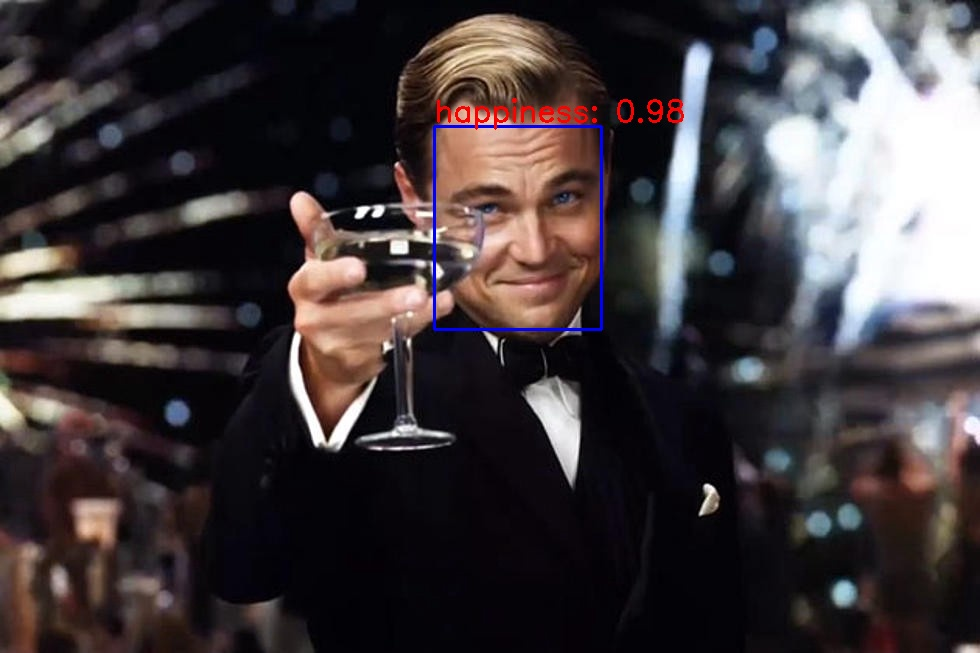Facial Expression Recognition package implemented in Pytorch.
Project description
FER-pytorch
Facial expression recognition package built on Pytorch and FER+ dataset from Microsoft.
Installation
pip install fer-pytorch
Training
Training is done using the synergy of Pytorch Lightning and Hydra packages for setting training loops and configs correspondingly. In order to run training you should clone the repo and
Install dependencies
pip install -r requirements/requirements-dev.txt
Define environmental variables
Just run export PYTHONPATH="$PWD" from the root directory and it would be enough
to run the code from the root. You can check the PYTHONPATH with echo $PYTHONPATH command.
Download data
bash get_data.sh
This bash command will download the archive with the data and unpack it into the necessary directories in such a way that everything is ready for training.
Define config
The config files are located in fer-pytorch/conf directory. To see all the parameters
and their default values run
python fer_pytorch/run_trainer.py -h
Run training
Training with default parameter values:
python fer_pytorch/run_trainer.py
Thanks to Hydra all the parameters set in config files can be changed directly from the command line while running the script:
-
Example with change of model from resnet34 to resnet18:
python fer_pytorch/run_trainer.py model.model_name="resnet18"
-
Example with change of number of epochs:
python fer_pytorch/run_trainer.py trainer.trainer_params.max_epochs=100
By default the output is saved to output/ directory. If you wish to set
the path to output, run
python fer_pytorch/run_trainer.py hydra.run.dir=path_to_output
Inference
Import inference class
import cv2
from fer_pytorch.fer import FER
fer = FER()
Initialize the model
There are 2 options:
fer.get_pretrained_model(model_name): download the ready-to-use pretrained on FER+ dataset weights from the github page of the package and initialize the model automatically. The list of available names are given infer_pytorch/pre_trained_models.pyfile as the keys ofmodelsdictionary. For example,fer.get_pretrained_model("resnet34").fer.load_user_weights(model_name, path_to_weights): with this option you can load your own weights that are stored locally.
Inference on an image
- Basic prediction
img = cv2.imread("tests/test_images/happy.jpg")
result = fer.predict_image(img)
Sample output:
[{'box': [295.90848, 87.36073, 463.75354, 296.00055],
'emotions': {'neutral': 0.00033704843, 'happiness': 0.98931086, 'surprise': 0.00018355528, 'sadness': 0.0026534477, 'anger': 0.0054451805, 'disgust': 0.0019571118, 'fear': 0.000112833266}}]
- Get only top emotion:
result = fer.predict_image(frame, show_top=True)
Sample output:
[{'box': [295.90848, 87.36073, 463.75354, 296.00055], 'top_emotion': {'happiness': 0.98931086}}]
- In order to save the output image, just set the output path:
result = fer.predict_image(frame, show_top=True, path_to_output="result.jpg")
Note
If there is more than one person on an image, this method will provide the results for all, whose faces are detected by the MTCNN detector. However, this is not the case for the methods described below (for list of images and video files). Instead, the inference methods for the list of images ad video files will return results for people with the largest bounding box around their faces. It is made for convenience and performance purposes since the mentioned methods output the json file with the results, so it would be necessary to track the people to produce the correct json files for corresponding detected people.
Inference on a list of images
Inference on a folder with images:
result_json_list = fer.predict_list_images(
path_to_input="tests/test_images",
path_to_output="tests/output_images",
save_images=True
)
Outputs the json with results and optionally the processed images in a separate directory.
It is also possible to read the result json with pandas leveraging FER class method:
result_df = FER.json_to_pandas("tests/output_images/result.json")
print(result_df.head())
Inference on a video file
fer.analyze_video(
path_to_video="tests/test_videos/test_video.mp4",
path_to_output="tests/test_video",
save_video=True
)
Outputs the json with results and optionally the processed video in a separate directory.
Just like in the previous case it is also possible to read the result json with pandas for further analysis leveraging FER class method:
df = FER.json_to_pandas("tests/test_video/result.json")
print(df.head())
Inference on the test part of the FER dataset
Get the dictionary with accuracy and f1 score for the test part of the FER+ dataset:
result_dict = fer.test_fer(
path_to_dataset = "fer_pytorch/dataset",
path_to_csv = "fer_pytorch/dataset/new_test.csv",
batch_size = 32,
num_workers = 8,
)
print(result_dict)
Output:
{'accuracy': 0.83, 'f1': 0.83}
Inference with the web camera
To run the model on the stream from the web camera and show the results in real-time just run
fer.run_webcam()
Web application
In order to demonstrate the fer-pytorch package the web application has been developed using Streamlit and deployed to Heroku via Docker image.
Link to the github page of the app: https://github.com/Emilien-mipt/fer-webapp
Link to the app: https://ferpytorch-webapp.herokuapp.com/
Project details
Download files
Download the file for your platform. If you're not sure which to choose, learn more about installing packages.
Source Distributions
Built Distribution
Hashes for fer_pytorch-1.1.2-py3-none-any.whl
| Algorithm | Hash digest | |
|---|---|---|
| SHA256 | d3dfd9d28a92ed72599337a123247e0c5b472176e65894306dd257a183055412 |
|
| MD5 | 35b449a2c6c0c1daff653de5ff212c40 |
|
| BLAKE2b-256 | ef54d34ff86994e39102b1b574ff2addd51ac15ff8bb6542d6031366af4111d5 |
















